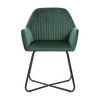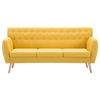Pliers: Must-haves in your toolbox
Pliers, those unassuming yet indispensable tools, are a must-have in every toolbox, be it the well-worn kit of a seasoned professional or a happy DIY enthusiast. With their diverse applications, pliers have earned their status as a must-have for anyone engaging in projects, both professionally and in the realm of DIY endeavours.
Pliers: A toolbox staple
At first glance, pliers may seem like a straightforward tool with a simple purpose – gripping and holding objects. However, their versatility goes far beyond this basic function. Pliers come in various types, each tailored for specific tasks, making them an asset in a multitude of situations.
One of the most common types is the slip-joint pliers, characterised by an adjustable pivot point that allows the tool to accommodate different sizes of objects. This adaptability makes slip-joint pliers ideal for gripping and turning bolts, making them a vital companion in mechanical and plumbing projects. Needle-nose pliers, with their slender, pointed jaws, excel in tasks that require precision, such as working with small or hard-to-reach objects. They are often used in electronics, jewellery making and DIY projects.
Pliers are not confined to gripping alone; many types come equipped with cutting edges, adding a cutting function to their repertoire. Diagonal cutting pliers, also known as wire cutters, are particularly useful for cleanly cutting wires and cables. This feature enhances their utility in electrical work and cable management.
From professional projects to DIY projects
Professionals across a spectrum of industries, from construction and automotive repair to electrical engineering and metalworking, rely on pliers as essential tools of their trade. Electricians use insulated pliers to safely manipulate wires, while carpenters and woodworkers employ them for tasks like pulling nails or bending metal fasteners. Plumbers find pliers invaluable for gripping and turning pipes. Automotive technicians use specialised types for delicate work on engines and components.
In the realm of DIY projects, pliers are a go-to tool for amateurs and hobbyists alike. From basic household repairs to crafting and model building, the versatility of pliers makes them a staple for tackling a wide range of tasks. Whether you're fixing a leaky faucet, assembling furniture or creating intricate jewellery, having a reliable set of pliers in your toolbox ensures you're equipped for whatever project comes your way.
Essential tools for every toolbox
A well-equipped toolbox is the cornerstone of any successful endeavour, whether you are a seasoned professional or a DIY enthusiast. The array of tools at your disposal can make the difference between a smooth project and a frustrating project. From the simplicity of a hammer to the precision of pliers, the contents of a toolbox play an important role in executing tasks efficiently and effectively.
-
Pliers: Pliers, with their versatile design and multifunctional capabilities, are an absolute necessity in any toolbox. Whether you're gripping, cutting, bending or holding, pliers provide the dexterity required for a myriad of tasks. Slip-joint pliers, with their adjustable pivot point, are perfect for gripping objects of varying sizes, making them indispensable in plumbing and mechanical work. Meanwhile, needle-nose pliers shine in tasks demanding precision, such as intricate electronics work or fine crafting. The combination of gripping power and cutting functionality makes pliers a true workhorse, earning them a prime spot in every toolbox.
-
Hammer: A classic and timeless tool, the hammer stands as a symbol of construction and craftsmanship. Its primary function – driving nails into various materials – is fundamental to countless projects. The claw hammer, with its dual-sided head featuring a flat face for driving nails and a curved claw for pulling them out, is a versatile choice for both professionals and DIY enthusiasts. From framing and carpentry to simple home repairs, a reliable hammer is the beating heart of any toolbox.
-
Electric drill: In the modern toolbox, the electric drill has become an essential power tool, transforming the way we approach drilling and fastening tasks. The ability to effortlessly drill into various materials, coupled with the convenience of cordless models, has made the electric drill a go-to choice for professionals and homeowners alike. With a range of attachments and bits available, an electric drill can be used for tasks ranging from simple hole drilling to complex woodworking and metalworking projects.
-
Screwdrivers: No toolbox is complete without a set of screwdrivers, the unsung heroes of assembly and repair. Whether dealing with simple household fixes or intricate electronic devices, screwdrivers are indispensable for turning screws and securing components. A versatile set that includes flat-head and Phillips-head screwdrivers in various sizes ensures that you are prepared for any screw-driven task that comes your way.
-
Tape measure: In the world of construction and DIY, accuracy is important, and a tape measure is the tool that delivers it. From measuring dimensions for furniture assembly to ensuring precise cuts in woodworking projects, a reliable tape measure is the key to achieving professional-level results. Its retractable design and ease of use make it an essential companion for projects large and small.
-
Nails and screws: While not tools in the traditional sense, nails and screws are the connective tissues that bring projects to life. A well-stocked toolbox should include an assortment of nails and screws. They should be in different sizes and types to accommodate various materials and applications. Whether you're framing a structure, hanging artwork or assembling furniture, having the right nails and screws ensures a secure and durable outcome.
Tips for a neat and tidy workshop
A workshop is a haven for creativity and productivity, but its potential can be hindered by chaos and disorganisation. A tidy workshop is not just aesthetically pleasing; it enhances efficiency, reduces stress and ensures that tools and materials are readily accessible when needed. Here, we explore practical tips and tricks to help you keep your workshop neat and tidy, fostering an environment conducive to successful projects.
-
Invest in a toolbox: A good toolbox is the foundation of workshop organisation. Choose one that suits your needs, with compartments and drawers to accommodate a variety of tools. A toolbox not only keeps your tools organised but also protects them from damage and corrosion. Consider a portable toolbox for frequently used tools and a larger, stationary one for additional storage. Label compartments for quick identification and make it a habit to return tools to their designated spots after each use.
-
Designate specific areas for different tasks: Create designated zones within your workshop for different types of tasks. For example, have a specific area for woodworking, metalworking or electronics. This helps maintain order by preventing tools and materials from migrating across the entire space. Each zone can have its own set of dedicated tools and storage solutions. This reduces clutter and streamlines the workflow.
-
Implement efficient storage solutions: Proper storage is the backbone of workshop organisation. Invest in shelves, cabinets and pegboards to create a systematic storage system for tools and materials. Utilise clear bins or containers for smaller items, ensuring easy visibility and access. Pegboards are excellent for hanging frequently used tools, keeping them within arm's reach while saving valuable workspace.
-
Regularly declutter: Periodically go through your tools and materials, identifying items that are no longer needed or are in disrepair. Purge the unnecessary clutter to create more space and make room for new projects. Donate or recycle items that are still functional but no longer serve your needs. A clutter-free workshop is not just visually appealing; it promotes a clear mindset and enhances overall efficiency.
-
Label everything: Labelling is a simple yet effective way to keep track of tools, materials and storage locations. Clearly label drawers, bins, and shelves so that you can quickly locate what you need. Colour-coded labels can further enhance organisation and provide a visual cue for where specific items belong. This not only saves time but also encourages others sharing the workspace to maintain order.
-
Utilise vertical space: Don't neglect the vertical space in your workshop. Install shelves, pegboards or wall-mounted cabinets to make the most of the available area. This not only keeps the floor clear but also provides additional storage options for tools and materials. Vertical storage is particularly useful for items that are not accessed daily.


















































